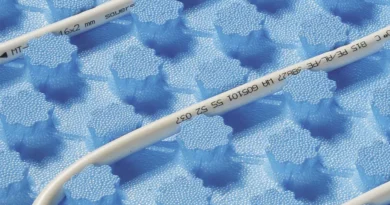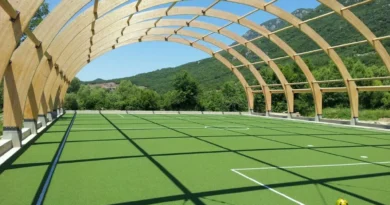The Benefits of Soundproof Flooring
Sound or acoustic insulation of floors has to prevent transmission of so called impact sounds. Impact sound is created by direct contact (impact) of two objects. This type of sound is especially characteristic for the floors. Soundproofing the floors in a room is a huge action which requires time, cash, and skills that most of us basically don’t have.
We create these sounds by walking, moving furniture, dropping things on the floor, using vibrating machines on the floor etc. Impact sound (sound of impact or structural sound) is transmitted through the floor to surrounding walls, installations and other construction parts of the building. This is the reason why we can hear sounds created several floors over or underneath us.
To prevent transmission of these sometimes annoying sounds, floor has to be constructed in a way that will prevent the transmission of the impact sounds to surrounding walls and objects.
Basically, the solution is to use a soundproof material that will break the direct connection between the floor and the surrounding elements of the building.
If the flooring is installed directly upon concrete foundation, impact sounds will be transmitted through out the whole building.
Floating Floors as a Solution to Sound Insulation
Floating floors are floors that are divided from the foundation by a soft, elastic layer of soundproof material. That layer is called the floating mass, sound absorber or the soundproof layer.
The structure of the floating floor
Foundation (ground level concrete or the level between floors of a building)
- Floating mass
- Foil
- Carrier of the flooring
- Flooring
Floating Mass
Floating mass has to completely muffle the sound and prevent its further transmission through out the building. Soft, elastic materials with lots of interconnected cells filled with air are best for sound insulation of floors.
Insulating power of a certain material can be evaluated by certain standards. First of all, there is improvement of insulation of impact sounds, ΔL, that shows in decibels how the material installed in floor improves the insulation ability of a the whole structure. This feature depends on the type of the used material and how thick was the layer of sound proof material. Value of this feature in top class soundproof materials is 25 dB.
Declaration of soundproof materials also shows its normalized impact sound level, marked with letter L. The smaller the evaluated normalized impact sound level, the better the impact sound insulation of a construction element. Best sound insulating materials have normalized sound impact level of 58 dB.
Sound insulation ability can be roughly evaluated base on the elasticity module of the used material, E expressed in N/cm2 or kN/m2. Low elasticity module materials are better sound insulators.
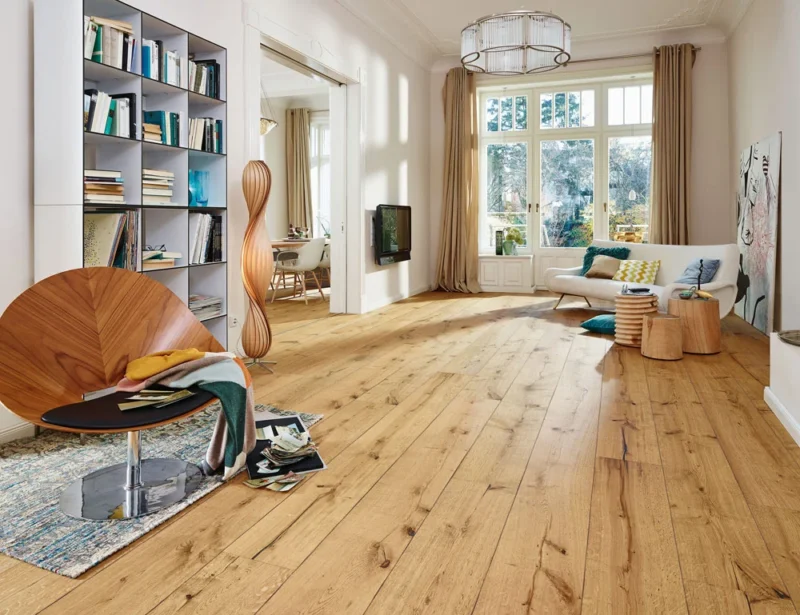
Best Materials for Floating Masses
Some of the best materials used for floating masses are mineral or organic fiber panels, such as mineral wool panels with 75-100 kg/m3 density or cotton fibers. Easily compressed, panel made of these materials can support heavy weights of furniture and people in houses or flats. Because of their high soundproofing ability floating mass made out of these materials can be only 1-2 cm thick.
Elasticized Styrofoam can also be used as a sound insulator. It has lower soundproofing abilities compared to fiber materials. Floating mass made of elasticized Styrofoam should be at least 2 cm thick and is generally used with floors that sustain heavy burdens (up to 1000 kg/m2) like floors in industrial sites or factories.
Expanded polystyrene (regular Styrofoam) and extruded polystyrene (stirodur) are usually used for thermo insulation and do not give great results as sound insulators even though they are highly porous materials.
Rubber is a good soundproofing material because sound travels through rubber at speed of 70 m/s and rubber is usually applied at the places of direct contact of rigid parts of the floor construction.
Bitumen can contribute to sound insulation of floors. It was generally used as parquet glue but today is mostly replaced by modern, easy to use glues.
Foil is installed in floating floors when the supporting floor layer is partially or completely made at construction site. Foil protects floating mass from moisture, concrete, plaster and other materials that can deteriorate its soundproofing ability.
Polyethylene (PE) or Polyvinyl chloride (PVC) is usually used for this purpose. If the foil is consisted of parts, they should be overlapping by 10 to 15 cm and connected with wide adhesive tape.
Supporting Floor Layer
The role of the supporting floor layer is to act as a firm, rigid and flat foundation. There are many different types of supporting floor layer like screed, beam system or even a combination of beams and panels.
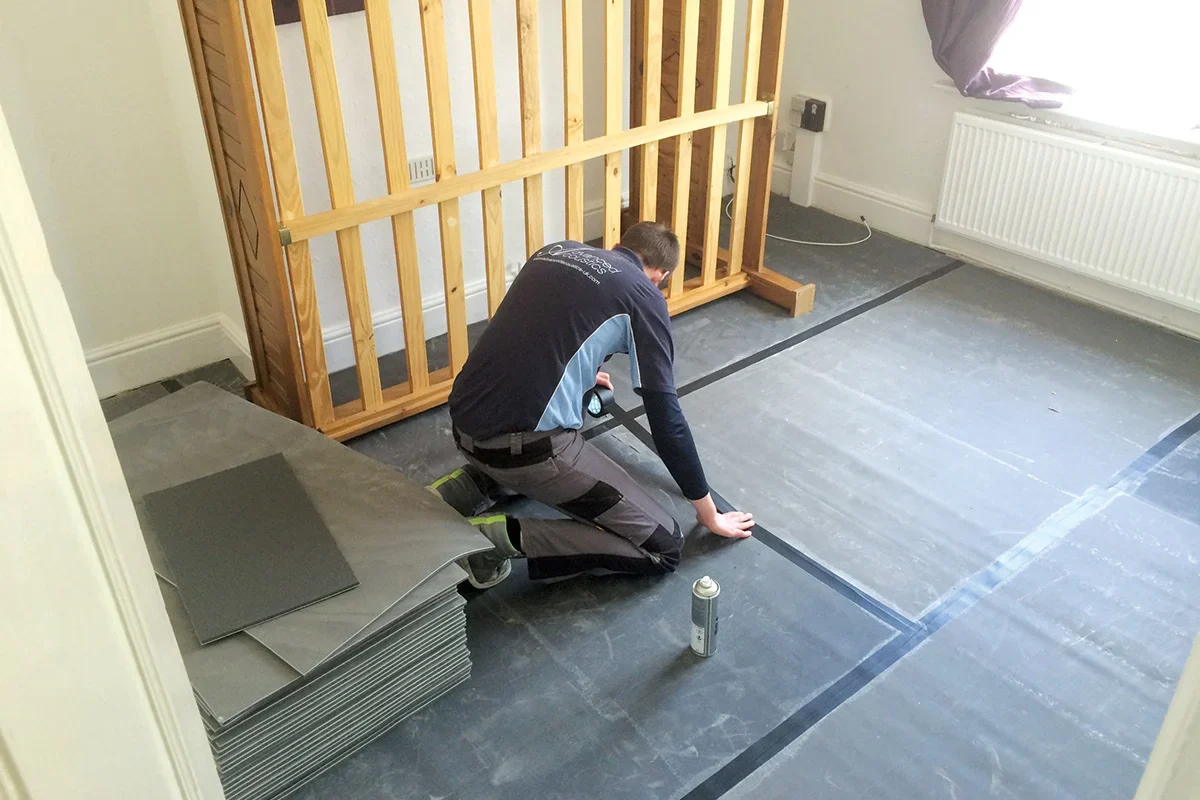
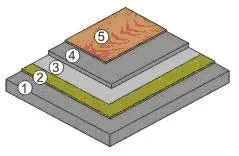 Foundation (ground level concrete or the level between floors of a building)
Foundation (ground level concrete or the level between floors of a building)